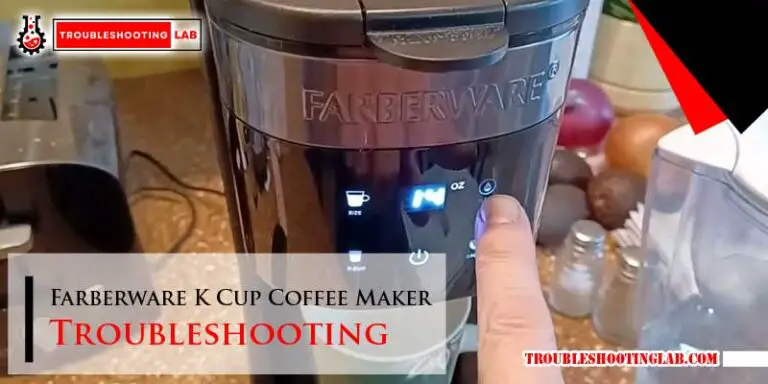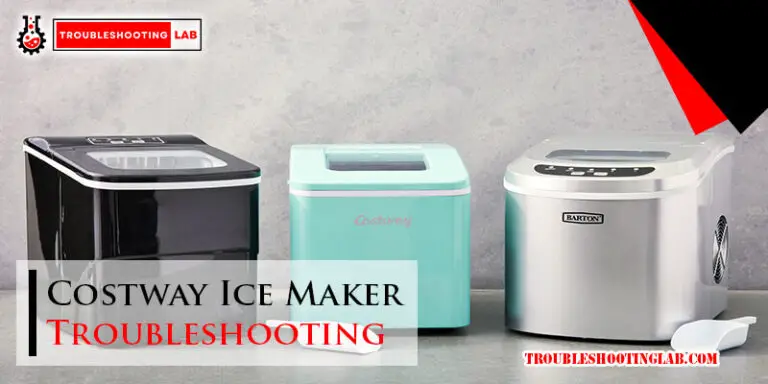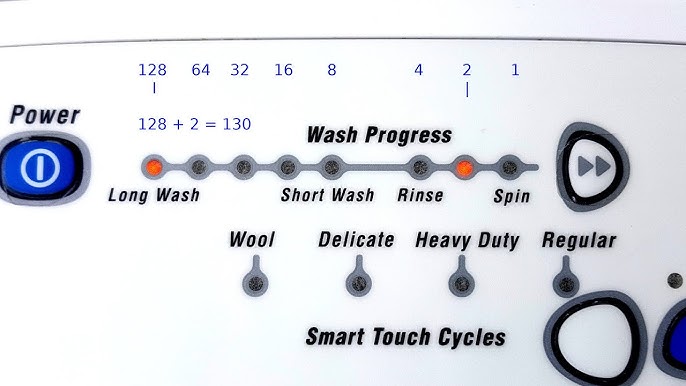Kitchenaid Refrigerator Drawers Troubleshooting: Quick Fixes
Is your KitchenAid refrigerator giving you trouble with its drawers? Maybe they’re sticking, not cooling properly, or just not working like they used to.
Whatever the issue, you’re not alone—and the good news is, many of these problems have simple fixes that don’t require a professional. This guide will walk you through everything you need to know to troubleshoot your KitchenAid refrigerator drawers. From common issues to step-by-step solutions, we’ve got you covered.
Imagine saving time, avoiding costly repairs, and getting your fridge back to working perfectly—all without the frustration. Sound good? Let’s dive in and tackle the problem together!
Common Issues With Refrigerator Drawers
Refrigerator drawers are essential for keeping food organized and fresh. Over time, these drawers may develop issues that affect their functionality. Addressing these problems quickly can prevent further damage and maintain efficiency.
Drawer Not Sliding Smoothly
A common problem with refrigerator drawers is difficulty in sliding them. This can occur due to debris or food particles stuck in the drawer tracks. Cleaning the tracks with warm, soapy water often resolves the issue. Misaligned tracks can also cause this problem. Ensure the drawer is properly positioned within its guide rails. If the issue persists, inspect for worn-out parts and consider replacing them.
Excessive Frost Buildup
Excess frost in drawers can impact their functionality. This often happens due to a faulty door seal or high humidity levels. Check for any gaps or cracks in the door seal and replace it if needed. Defrosting the freezer and wiping down the interior can help prevent further frost buildup. Keeping the drawer closed as much as possible also minimizes moisture entry.
Drawer Not Sealing Properly
A poorly sealed refrigerator drawer can lead to temperature fluctuations. Inspect the drawer gasket for cracks, dirt, or wear. Clean it with a damp cloth to remove any debris. If cleaning doesn’t resolve the problem, replacing the gasket might be necessary. Ensure the drawer is properly aligned to achieve a tight seal.
Temperature Inconsistencies
Temperature issues in refrigerator drawers can spoil stored food. This may result from blocked vents or an overstuffed drawer. Check the air vents and remove any obstructions. Avoid overloading the drawer to maintain proper airflow. If the problem continues, it could indicate a thermostat issue requiring professional assistance.
Quick Fixes For Stuck Drawers
Stuck refrigerator drawers can be frustrating during busy kitchen moments. Often, the issue is minor and fixable with simple steps. Regular maintenance can prevent bigger problems and keep your fridge working smoothly. Below are quick fixes to help you resolve stuck drawers effectively.
Cleaning Debris From Tracks
Debris buildup in drawer tracks can cause obstructions. Start by removing the drawer carefully. Inspect the tracks for crumbs, spills, or sticky residue. Use a damp cloth or sponge to clean the tracks thoroughly. Avoid harsh chemicals; mild soap works best for stubborn grime. Dry the tracks completely before reinserting the drawer.
Adjusting Alignment
Misaligned drawers can get stuck during use. Pull the drawer out and check if it’s sitting unevenly. Look for gaps or tilted sides. To fix alignment, adjust the drawer’s positioning within the tracks. Push it gently back in, ensuring it slides evenly. Repeat the process until the movement feels smooth.
Lubricating Drawer Rails
Dry or worn rails can make drawers difficult to open. Apply a small amount of food-safe lubricant to the rails. Use a cotton swab or cloth for precise application. Spread the lubricant evenly along the metal or plastic rails. Test the drawer to ensure it glides smoothly after lubrication.
Addressing Frost Buildup
Frost buildup in your KitchenAid refrigerator drawer can be frustrating. It impacts storage space and can affect the efficiency of your appliance. Addressing frost issues early can prevent bigger problems later. Below are steps to troubleshoot frost buildup effectively.
Defrosting The Drawer
Start by emptying the refrigerator drawer completely. Remove all food items and trays. Turn off the refrigerator or unplug it for safety. Leave the drawer open to allow the frost to melt naturally. Place towels inside to absorb excess water. Avoid using sharp tools to scrape the frost, as this can damage the drawer.
Checking Door Gaskets
Inspect the door gaskets for cracks or wear. Damaged gaskets can let warm air in, causing frost buildup. Run your fingers along the gasket to feel for gaps or tears. Clean the gasket with warm water and mild soap to remove dirt or debris. Replace the gasket if it’s damaged or doesn’t seal properly.
Inspecting The Defrost System
Check the defrost system if frost buildup persists. Locate the defrost drain and ensure it’s not clogged. A blocked drain can cause water to freeze and create frost. Use warm water to clear the drain if needed. Inspect the defrost heater and thermostat for signs of malfunction. Consider contacting a technician for further assistance if the defrost system isn’t working.
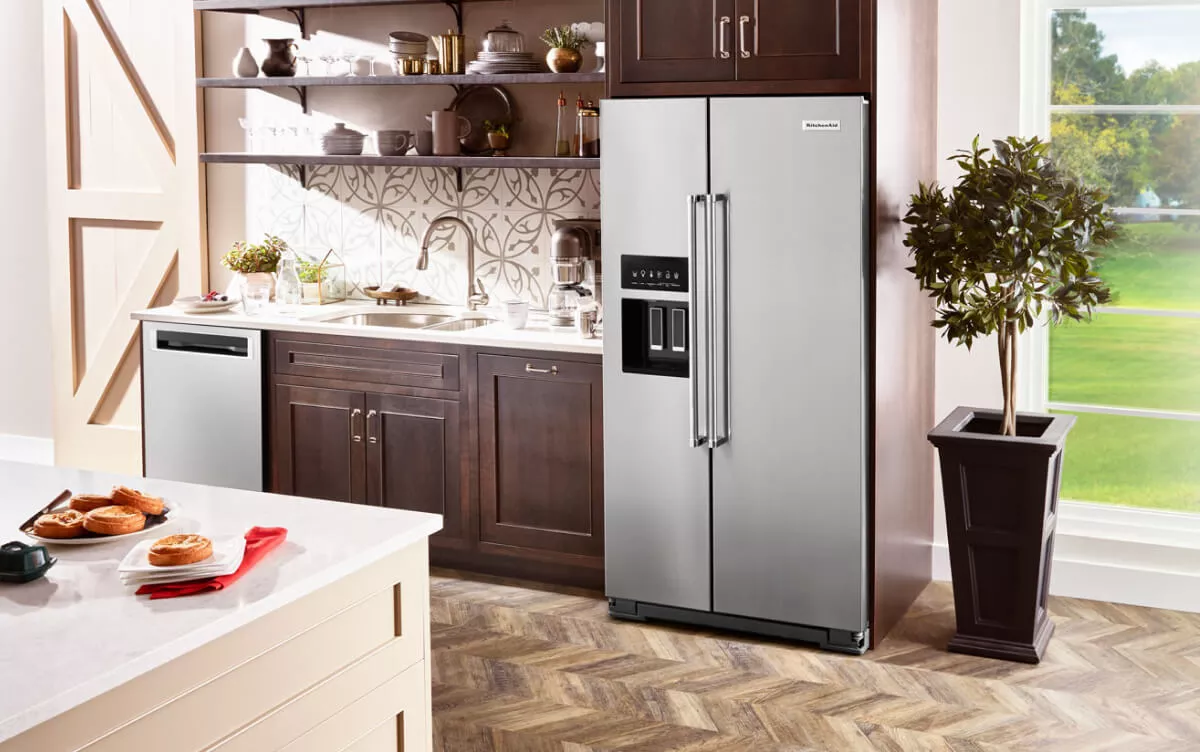
Credit: www.kitchenaid.com
Fixing Sealing Problems
Sealing problems in your KitchenAid refrigerator drawers can lead to inefficiency. They may cause temperature issues and increase energy consumption. Fixing these problems ensures your food stays fresh longer. Below, we’ll guide you through common sealing problems and solutions.
Replacing Damaged Gaskets
A damaged gasket often causes sealing issues. Inspect the gasket for cracks, tears, or warping. Clean the gasket with warm soapy water to remove dirt and debris. If it’s still damaged, replace it with a new one. Ensure you buy the correct gasket size for your model. Gently press the new gasket into the groove, ensuring a snug fit.
Ensuring Proper Drawer Closure
Improper drawer closure can lead to sealing problems. Check for obstructions like food items or packaging. Remove anything blocking the drawer from closing fully. Misaligned drawers can also cause issues. Realign the drawer by adjusting its position on the tracks. Push the drawer firmly to check if it closes properly.
Testing For Air Leaks
Air leaks reduce your refrigerator’s efficiency. Perform a simple test with a piece of paper. Close the drawer with the paper partially sticking out. Gently pull the paper to check resistance. If it slides out easily, the seal is weak. Reinspect the gasket and drawer alignment. Fix any issues to restore the seal.
Dealing With Temperature Issues
Temperature issues in your Kitchenaid refrigerator drawers can be frustrating. If your produce isn’t staying fresh or your beverages aren’t cold enough, it’s time to dig into the root cause. Fixing these problems often takes simple adjustments rather than professional help, and you’ll feel great knowing you solved it yourself.
Calibrating Temperature Settings
Start by checking the temperature settings on your refrigerator. The ideal setting for most refrigerators is between 37°F and 40°F. If your drawers feel too warm or cold, adjust the temperature gradually and give it at least 24 hours to stabilize.
Is the control panel hard to figure out? Your user manual can guide you. If the settings don’t seem to respond, it could be a sign of a deeper issue, like a malfunctioning control board.
Checking Airflow Vents
Blocked airflow vents can lead to uneven cooling in your drawers. Check if any food items or containers are obstructing the vents. Even a small blockage can affect how cold air circulates inside.
Keep the vents clear and avoid overstuffing the refrigerator. Overloading your fridge makes it harder for air to flow, impacting the drawer temperatures. Think of it like packing a suitcase—leave some breathing room.
Inspecting The Thermostat
If adjusting the settings and clearing vents don’t work, the thermostat could be the problem. Look for signs like inconsistent cooling or temperatures that won’t adjust at all. These might hint at a faulty thermostat.
A simple way to test is using a thermometer inside the drawer. If the reading doesn’t match the setting, you may need to replace the thermostat. Thermostat replacement is usually straightforward, but if you’re unsure, consider reaching out to a technician.
Have you tried any of these steps before? What did you notice? Troubleshooting your refrigerator isn’t just about fixing the issue—it’s about understanding how your appliance works so you can keep it running smoothly.
When To Call A Professional
KitchenAid refrigerator drawers are an essential part of your appliance. They help keep food items fresh and organized. But sometimes, issues arise that need professional attention. Knowing when to call a repair expert can save time and money. It can also prevent further damage to your refrigerator.
Signs Of Major Mechanical Failures
Some issues point to serious mechanical problems. A noisy motor is one such sign. Loud humming or grinding noises often indicate a failing component. Another red flag is a drawer that won’t cool properly. If items inside the drawer stay warm, the cooling system might be failing.
Water pooling under the refrigerator is another concern. This could mean a leak or a blocked drain. Electrical issues, like flickering lights or a non-responsive control panel, also need expert attention. These problems often require specialized tools and knowledge to fix.
Costs Versus Benefits Of Repair
Repairing a refrigerator drawer can sometimes cost as much as replacing it. Before calling a professional, compare repair costs with the price of a new unit. If the repair costs are over half the price of a replacement, it might not be worth it.
Also, consider the age of your refrigerator. Older models may be less energy-efficient. Replacing an aging appliance could save on energy bills over time. A professional can provide advice on whether repairing or replacing is the better choice.
Preventative Maintenance Tips
Keeping your KitchenAid refrigerator drawers in good condition extends their lifespan. Regular maintenance minimizes issues and ensures they work smoothly. A few simple habits can save you from costly repairs.
Regular Cleaning Routines
Clean the drawers weekly to avoid dirt and debris buildup. Use mild soap and warm water for cleaning inside and outside surfaces. Dry drawers thoroughly to prevent moisture damage. Avoid harsh chemicals that might scratch or weaken the material.
Inspecting Seals And Hinges
Check the seals around the drawers for cracks or wear. Damaged seals can let cold air escape, reducing efficiency. Ensure hinges are secure and aligned correctly. Tighten loose screws to avoid misalignment or wobbling drawers.
Avoiding Overloading Drawers
Distribute weight evenly when placing items in the drawers. Overloading can strain the tracks or cause them to jam. Avoid storing heavy items that may damage the drawer base. Follow the manufacturer’s weight limit for safe usage.
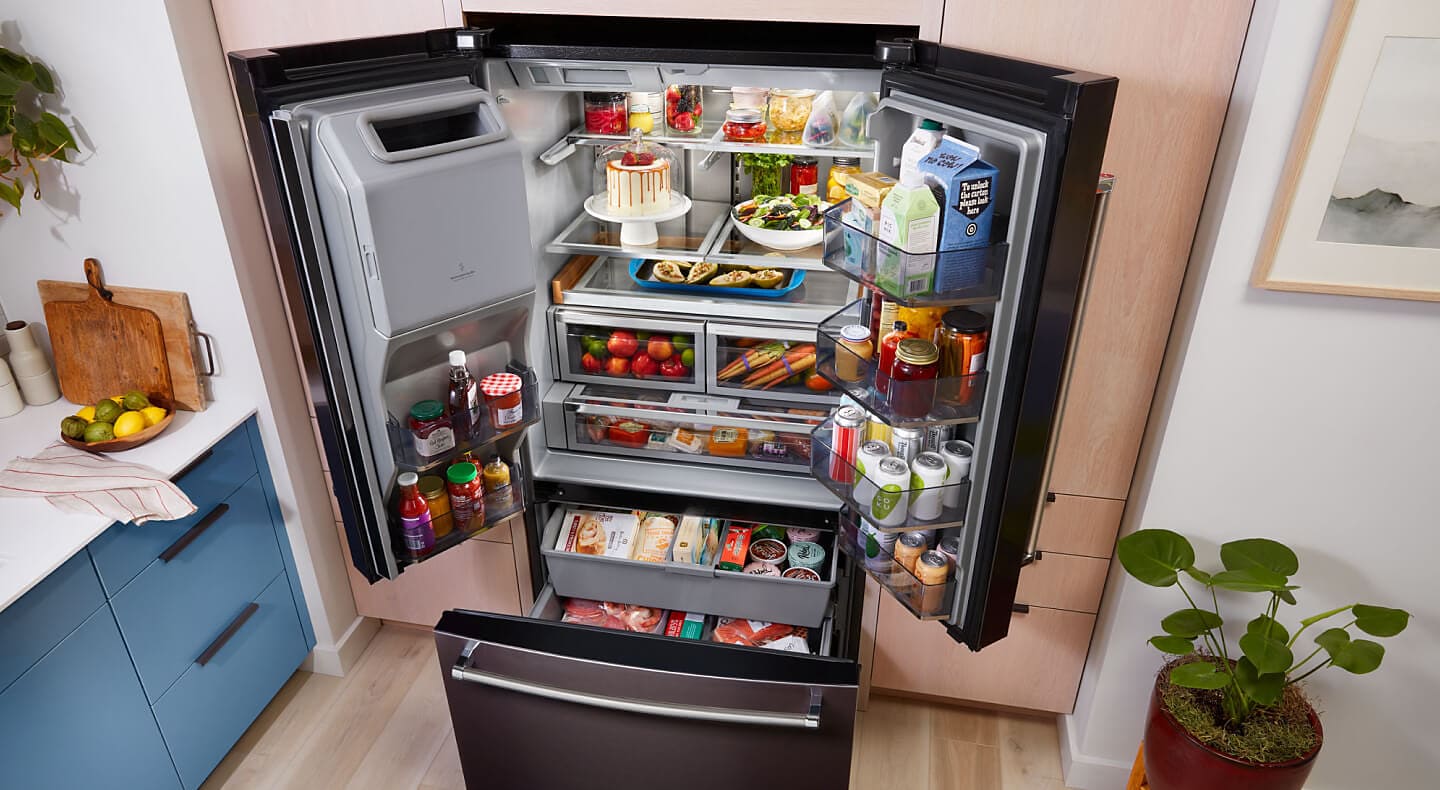
Credit: www.kitchenaid.com
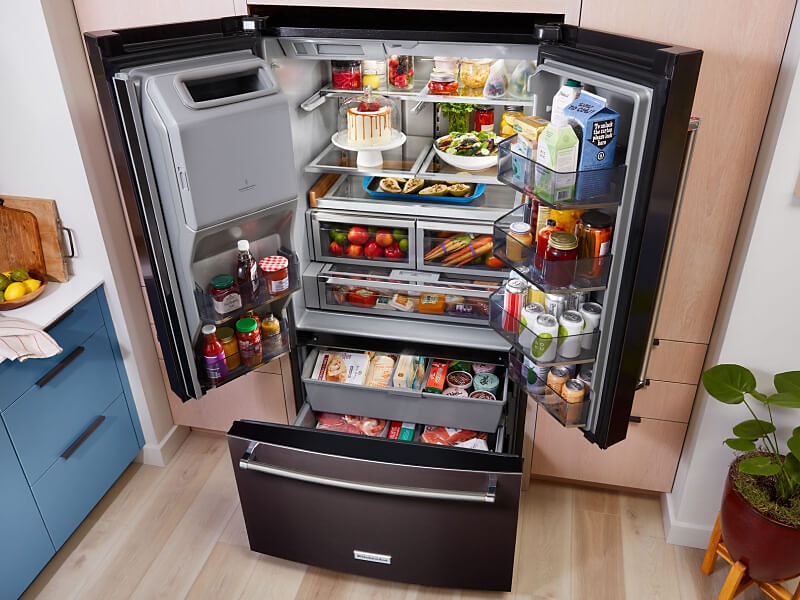
Credit: www.kitchenaid.com
Conclusion
Troubleshooting Kitchenaid refrigerator drawers doesn’t have to be overwhelming. Simple checks, like inspecting seals or adjusting temperature, can solve many issues. Regular cleaning and proper organization also help maintain drawer performance. For persistent problems, consulting the user manual or a professional is best.
Staying proactive with maintenance ensures longer-lasting efficiency. Keep your refrigerator running smoothly by addressing small issues early. This saves time, money, and unnecessary stress. With these tips, you can enjoy a well-functioning appliance every day. Always prioritize safety and follow proper guidelines during repairs or inspections.

